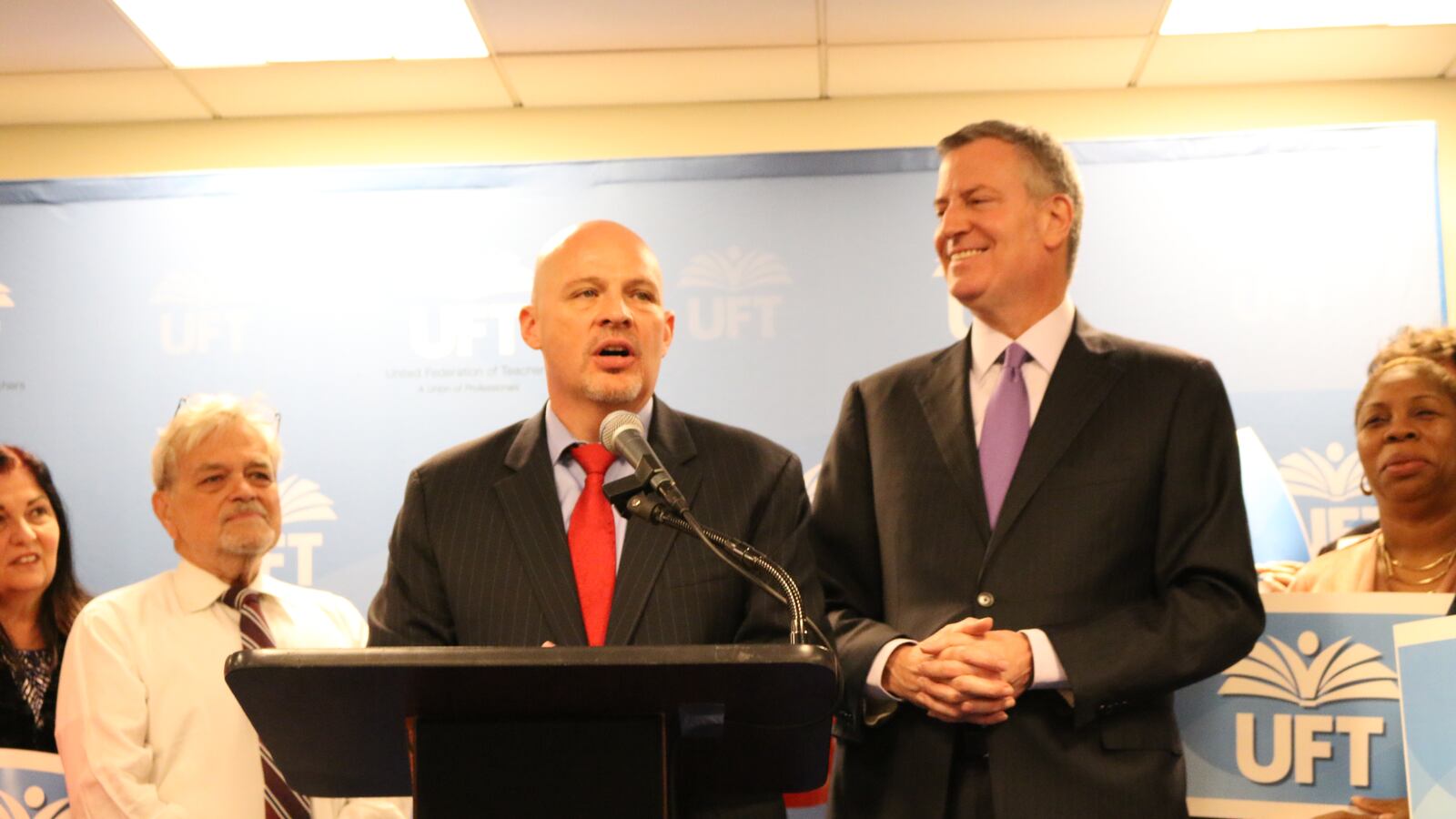Michael Bloomberg may have been the education mayor, but Bill de Blasio is spending a lot more money on it.
City spending on education has grown from nearly $17 billion in 2008 during Bloomberg’s reign, to a projected $24.3 billion for next year. In the last five years of Bloomberg’s tenure, education spending increased 13 percent; by the end of his first term, spending under de Blasio is projected to jump 27 percent.
That boost, according to a new Independent Budget Office analysis of the city’s preliminary 2018 budget, is largely attributable to two main categories: spending on staff salaries and payments to charter schools and non-public schools often used for special education.
“When we look at the proposed growth for 2018 in the mayor’s preliminary budget, these two items account for almost all of [it],” said Ray Domanico, lead author of the IBO report.
De Blasio’s 2014 contract with the UFT is having a ‘major impact’
Salary and benefits for the city’s 75,000 teachers comprise the largest share of the education budget: $15.3 billion. Next year alone, staff salaries (which include non-teachers) are set to cost the city an additional 5.7 percent — or $823 million — almost as much as the five-year cost of the mayor’s Renewal program for struggling schools. During the last four years of the Bloomberg administration, by contrast, salaries grew only about 1.3 percent per year.
The reason for that large discrepancy, according to the IBO, is a contract de Blasio negotiated with the United Federation of Teachers months after taking office, which gave teachers retroactive pay to make up for a salary freeze.
“The cost of the salary increases and retroactive pay embodied in the 2014 contract settlement have had a major impact on the DOE’s budget,” according to the report.
Another reason for the growth in staff costs is, well, more staff. Nearly 13,000 more people are projected to be drawing education department salaries next year, compared with the last year of the Bloomberg administration.
Charter payments continue to grow
Despite smaller personnel costs during the final Bloomberg years, what did increase significantly were payments to charters and non-public schools. Those payments rose from $1.3 to nearly $2.5 billion between 2008 and 2013, a growth rate of roughly 13 percent each year.
That trend has continued under de Blasio. As charter school enrollment has grown to over 100,000 students —10.5 percent of the city’s public school student population — payments have also increased.
Payments to charters and non-public schools are set to cost $3.5 billion in 2018, up roughly 1 billion since the last year of the Bloomberg administration.
The IBO’s Domanico said staff salaries and charter payments are likely to increase in the future — and might help explain why de Blasio’s vision for the city was relatively light on education proposals this year.
The education budget “is going up by a billion dollars for 2018, and it’s being driven by these two items,” he said. “One has to wonder how much is available to do other things.”
Freddi Goldstein, a spokeswoman for the mayor’s office, said in an email that the city was proud of its investment.
“This investment supports an education agenda that serves every student, and we’re seeing the results – pre-K for every 4-year-old, the highest-ever grad rates, lowest ever dropout rates, and the highest rate of students going to college,” she said. “That’s money well spent.”
Editor’s note: This story has been updated with a response from the mayor’s office.

